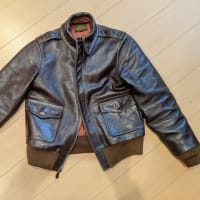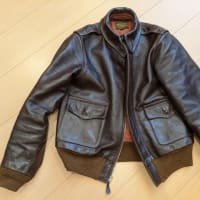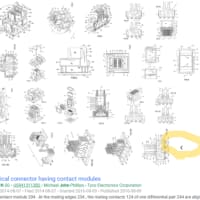WO2015103010
[0049] Tracking system 201 is configured to determine a pose (i.e., position and orientation) of one or more objects during a surgical procedure to detect movement of the object(s).
【0040】
追跡システム201は、外科手技の間、1つまたは複数の物体の姿勢(すなわち、位置および向き)を決定して物体の動きを検出するように構成される。
For example, the tracking system 201 may include a detection device that obtains a pose of an object with respect to a coordinate frame of reference of the detection device.
例えば、追跡システム201は、検出デバイスを含み得、それは、検出デバイスの参照の座標フレームに対する物体の姿勢を得る。
As the object moves in the coordinate frame of reference, the detection device tracks the pose of the object to detect (or enable the surgical system 200 to determine) movement of the object.
物体が、参照の座標フレーム内で動くと、検出デバイスは、物体の姿勢を追跡して、物体の動きを検出する(または手術システム200が決定することができる)。
As a result, the computing system 202 can capture data in response to movement of the tracked object or objects.
果として、コンピューターシステム202は、追跡される1つまたは複数の物体の動きに応じてデータを捕獲することができる。
Tracked objects may include, for example, tools/instruments, patient anatomy, implants/prosthetic devices, and components of the surgical system 200.
結追跡される物体は、例えば、ツール/器具、患者の解剖学的構造、インプラント/プロテーゼデバイス、および手術システム200の部品を含み得る。
Using pose data from the tracking system 201, the surgical system 200 is also able to register (or map or associate) coordinates in one space to those in another to achieve spatial alignment or correspondence (e.g., using a coordinate transformation process as is well known).
追跡システム201からの姿勢データを使用して、手術システム200はまた、1つの空間内の座標を別の空間内の座標に対して位置決めして(またはマッピングするかまたは関連付ける)、空間アラインメントまたは対応を達成することができる(例えば、周知のような座標変換法を使用して)。
Objects in physical space may be registered to any suitable coordinate system, such as a coordinate system being used by a process running on the surgical controller 212 and/or the computer device of the haptic device 204.
物理的空間内の物体は、手術用コントローラー212および/または触覚デバイス204のコンピューターデバイス上で実行するプロセスによって使用されている座標システムのような任意の適切な座標システムに位置決めされ得る。
For example, utilizing pose data from the tracking system 201, the surgical system 200 is able to associate the physical anatomy, such as the patient's tibia, with a representation of the anatomy (such as an image displayed on the display device 203).
例えば、追跡システム201からの姿勢データを利用して、手術システム200は、患者の脛骨のような物理的な解剖学的構造を、解剖学的構造の表示(例えば、表示デバイス203上に表示された画像)と関連付けることができる。
Based on tracked object and registration data, the surgical system 200 may determine, for example, a spatial relationship between the image of the anatomy and the relevant anatomy.
追跡された物体および位置決めデータに基づいて、手術システム200は、例えば、解剖学的構造の画像と関連した解剖学的構造との間の空間的な関係を決定し得る。
EP3503027
[0028] As an alternative to the convolution method illustrated in Figure 7 , one could obtain the velocity for the pixels in the sampling windows using an analytical method, or any other suitable method.
【0029】
図7に示す畳込方法の代替として、解析的方法、又は、他の適切な方法を用いて、サンプリングウィンドゥにおけるピクセルの速度を得ることもできる。
For example, if the expected background image is of earth, one could apply an analytical method.
例えば、予想される背景画像が地球である場合に解析的方法を用いることができる。
First, calculate the location on earth that the center of the sampling window is depicting.
第1のステップとして、サンプリングウィンドゥの中心が示す地球上の位置を計算する。
This can be calculated using the equation Reci2fpECI = Qc2eci*(Qcam2c*Reci2fpCAM).
これは、Reci2fpECI=Qc2eci*(Qcam2c*Reci2fpCAM)の式を用いて計算することができる。
Reci2fpECI is the location on the Earth that the pixels are representing, in Earth Centered Inertial (ECI) coordinates. Qc2eci is the attitude of the object tracking the target, for example vehicle 200 in Figure 1 , in ECI coordinates.
Reci2fpECIは、地球中心慣性(ECI: Earth Centered Inertial)座標系において、ピクセルが示す地球上の位置である。Qc2eciは、ECI座標系における、例えば、図1に示すビークル200などの、対象物を追跡する物体の姿勢である。
Qcam2c is the camera attitude with regard to the vehicle coordinates.
Qcam2cは、ビークル座標に対するカメラの姿勢である。
Reci2fpCAM is a vector from the ECI origin to the center of the pixel footprint in the camera coordinates.
Reci2fpCAMは、カメラ座標における、ECI原点からピクセルのフットプリント(footprint)の中心までのベクトルである。
US10668627
In yet another embodiment, a system for detecting a pose and force associated with an object may include an enclosure comprising a housing and a deformable membrane coupled to an upper portion of the housing, the enclosure configured to be filled with a medium.
【0006】
さらにもう一つの実施形態において、物体と関連付けられた姿勢及び力を検出するためのシステムは、筐体及び筐体の上部に結合された変形可能な膜を有する容器を含んでよく、容器は、媒体で満たされるように構成される。
The system may also include an internal sensor, disposed within the enclosure, having a field of view configured to be directed through the medium and toward a bottom surface of the deformable membrane.
システムは、容器の内部に配置され、媒体の中を通って変形可能な膜の底面に向けられるように構成される視野を有する内界センサを含んでもよい。
The internal sensor may output a deformation region within the deformable membrane as a result of contact with the object.
内界センサは、物体との接触の結果として変形可能な膜の内部の変形領域を出力してよい。
The system may further include a processor that determines a pose of the object and an amount of force applied between the deformable membrane and the object.
システムは、物体の姿勢、及び、変形可能な膜と物体との間に加えられる力の量を決定するプロセッサをさらに含んでよい。
WO2018175808
[0038] Additionally, the perception component 124 may signal perception output 129 to one or more components of the control system 100.
【0034】
加えて、知覚コンポーネント124は、知覚出力129を制御システム100の1つ以上のコンポーネントに信号伝達し得る。
The perception output 129 may utilize, for example, a perception layer to subtract objects which are deemed to be persistent from the current sensor state of the vehicle.
知覚出力129は、例えば、知覚層を利用して、乗り物の現在のセンサ状態からの持続と見なされる物体を差し引き得る。
Objects which are identified through the perception component 124 can be perceived as being static or dynamic, with static objects referring to objects which are persistent or permanent in the particular geographic region.
知覚コンポーネント124を通して識別される物体は、静的または動的であるように知覚されることができ、静的物体は、特定の地理的領域内で持続的または恒久的である、物体を指す。
The perception component 124 may, for example, generate perception output 129 that is based on sensor data 115 which exclude predetermined static objects.
知覚コンポーネント124は、例えば、所定の静的物体を除外したセンサデータ115に基づく知覚出力129を生成し得る。
The perception output 129 can correspond to interpreted sensor data, such as
知覚出力129は、
(i) image, sonar or other electronic sensory-based renderings of the environment,
(i)環境の画像、ソナー、または他の電子感覚ベースのレンダリング、
(ii) detection and classification of dynamic objects in the environment, and/or
(ii)環境内の動的物体の検出および分類、および/または、
(iii) state information associated with individual objects (e.g., whether the object is moving, pose of the object, direction of the object).
(iii)個々の物体に関連付けられた状態情報(例えば、物体が移動中であるかどうか、物体の姿勢、物体の方向)等の解釈されたセンサデータに対応し得る。
【0155】
いくつかの実施例では、光学コードのためのファインダ及びクロッキングパターンは、コードの発見と物体の姿勢の正規化の両方に必要とされるモジュールを、最小化又は閾値以下に低減するように選択されてもよい。
いくつかの実施例では、このファインダ及びクロッキングパターンは、サイズを縮小して、データ及びエラー訂正に対して、より高い割合のコード空間をもたらしてもよい。
【0011】
一般に、本開示はデジタル画像における物体識別のための技術について説明する。
これらの技術は、画像における物体識別の計算量を減少させ得る。
本開示の技術では、画像の空間分割に基づくキーポイント/特徴の抽出が規定されている。
検出は画像内のタイルのサブセットに基づき得る。
全体画像よりもむしろタイルのサブセットだけを処理すると、検出パイプラインの計算要件を減らすことができる。
開示された空間分割は、スケールベースのアルゴリズムとも組み合わせることが可能である。
その上、本開示は、物体の非ダウンサンプリングの画像に対して局所的に検出された特徴の投影を通じて、検出された物体の姿勢を決定するための技術を提供する。
[0003] Improved attitude agility in small satellites increases their value by improving their data collection rate and increasing the time available for transmission of that data to the ground.
【0003】
小型衛星における改良された姿勢機敏性(agility)は、データ収集速度を改善し、データを地上に伝達するために利用できる時間を増加させることによりその価値を増加させる。
データを収集または伝達するために、衛星が1つの姿勢から他の姿勢に移行するときに時間遅れが存在するからである。
If a conveyor is not present, and the objects are positioned before a camera system by hand, the system can compile a history (histogram) about the pose at which items are most commonly positioned for reading.
【0170】
搬送ベルトがなく、物体が手でカメラシステムの前に置かれる場合には、システムは、読み取りのために商品が置かれる際の最も一般的な姿勢についての履歴(ヒストグラム)を集計することができる。
すなわち、(任意の技術で)物体の識別が成功する度に、
システムは、その物体が精算所に提示された際の3Dの向き(及び任意で商品が移動した経路)の情報を記録する。
データは、レジ係単位(又はセルフサービスの精算所の場合は顧客単位)で収集して、異なるユーザの異なる習慣を考慮する。
(レジ係は、通例、例えば従業員IDとパスワードをキーパッド又は同様の装置から入力することにより、POSシステムに「サインイン」する。
【0266】
買い物袋及び/又は袋詰めを行うエリアも識別を支援するために強化することができる。


























※コメント投稿者のブログIDはブログ作成者のみに通知されます